The World's Future Is in the Hands of Chinese President Xi Jinping
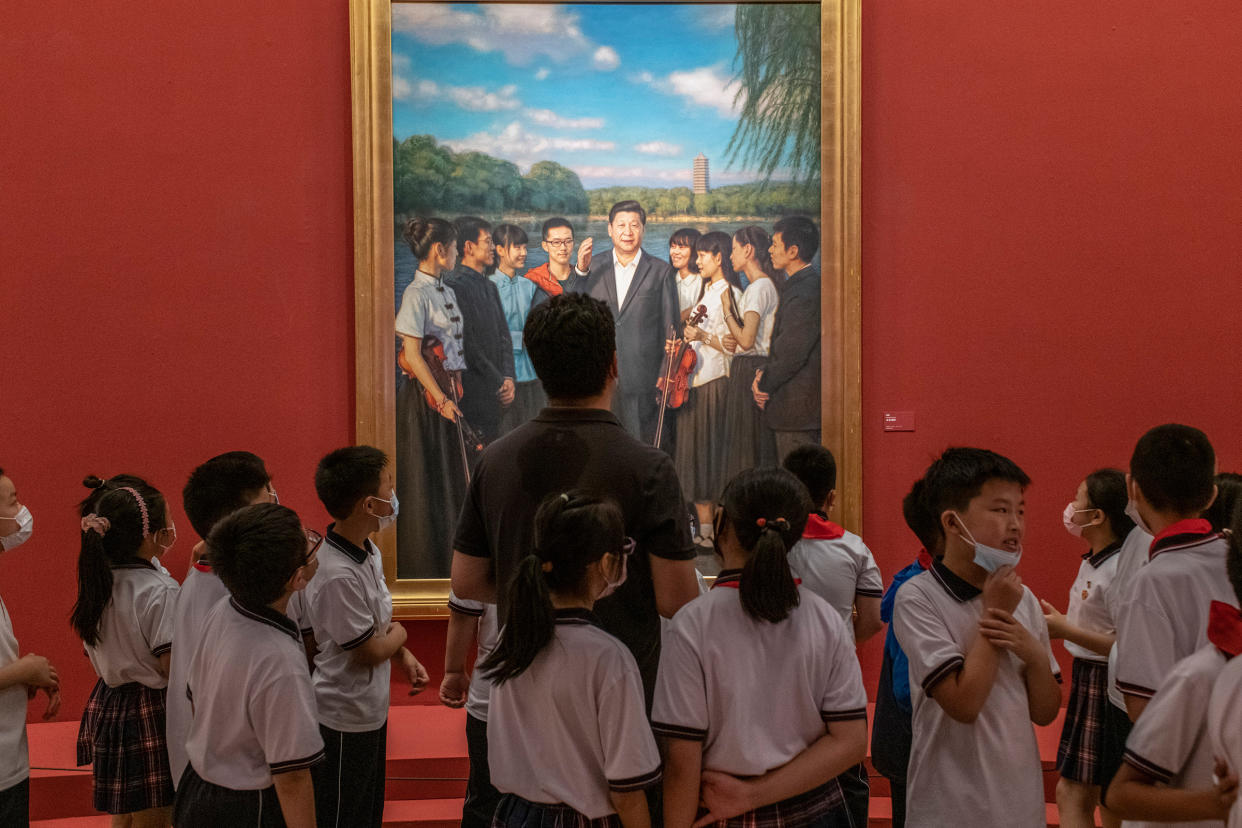
- Oops!Something went wrong.Please try again later.
- Oops!Something went wrong.Please try again later.
Visitors in front of a portrait of Xi at the National Art Museum in Beijing on June 30, 2021. Credit - Gilles Sabrié—The New York Times/Redux
Back in March 2018, I found my mind wandering inside Beijing’s Great Hall of the People as China’s rubber-stamp parliament voted to remove the two-term presidential limit. Ensconced in the building’s top tier with other journalists and dignitaries straining to hear the proceedings, I stared up at the huge red star ceiling motif that loomed over Chinese Communist Party (CCP) delegates. Nearby, two bored European diplomats gossiped noisily.
If we perhaps failed to grasp the magnitude of what was transpiring in that auditorium 4 1⁄2 years ago, it’s only too clear today. The world has since endured a pandemic that sprouted amid official obfuscation in China’s central city of Wuhan and spilled across every continent to claim an estimated 15 million lives. Beijing has led a campaign of incarceration and indoctrination of its Uighur Muslim minority that the U.N. on Aug. 31 decreed “crimes against humanity.” And China has backed Russia’s Feb. 24 invasion of Ukraine, parroting Vladimir Putin’s excuses regarding NATO expansion, refusing to join international sanctions, and amplifying Kremlin propaganda. The architect of all this tumult was the man in the blue tie sitting below me who, that spring afternoon, was effectively anointed China’s leader for life: President Xi Jinping.
On Oct. 16, Xi’s coronation as emperor will be complete. The 20th CCP Congress, to be held in that same squat building, will mark the start of his third leadership term, ripping up a long-held convention that Chinese leaders serve only two. It effectively ends the institutionalization of political power around the party that shepherded China’s economic miracle, and instead centers it on a single individual swathed in a cult of personality not seen since Mao Zedong. At the age of 69, Xi becomes China’s most powerful leader in modern history.
Read More: The Most Powerful Person in the World Is China’s President
But it’s an apotheosis that threatens unprecedented instability. Over the past decade, Xi has preached China’s autocracy as a “new option for other countries who want to speed up their development” while overseeing policy blunders that undermine global prosperity. Xi’s deepening demagoguery signals an entrenched superpower rivalry and cascading hazards for all those who depend on China’s $17.7 trillion economy.
China contributed 28% of GDP growth worldwide from 2013 to 2018 and is the top trading partner to more than 120 nations. But Xi’s fanatical adherence to an increasingly untenable zero-COVID policy has locked down hundreds of millions of Chinese people, shuttering factories and leaving container ships loitering outside ports.
Xi’s belligerence is also stoking resentment overseas. The World Bank has named supply-chain disruptions stemming from China lockdowns as driving a cut in global growth—forecast this year at 2.9%, down from 5.7% in 2021. In July, the heads of the FBI and Britain’s MI5 jointly declared Beijing the “biggest long-term threat to our economic and national security.” Xi has overseen border clashes with India, economic warfare with Australia, and standoffs with Vietnam, the Philippines, and the U.S. in the disputed South China Sea. In the West, confidence in China may never recover from Xi’s announcing a “no limits” partnership with Putin just weeks before his invasion of Ukraine. “It shows the disdain that Xi Jinping has toward the U.S. that he would be seen on a stage with Vladimir Putin, who is not a natural ally,” says Jon M. Huntsman, a former U.S. ambassador to both China and Russia. “It’s their shared antipathy toward the U.S. that brings them together.”
Read More: Column: How Ukraine Turned the Tide Against Russia
All this sets the stage for a new Cold War, one that threatens to be even more devastating because of economic interdependence. Never before in human history has the global economy—and the livelihoods of so many billions—been so at the whim of one man. “The future is bright for Xi Jinping,” says professor Steve Tsang, director of the SOAS China Institute at the University of London, “and dark for everybody else.”
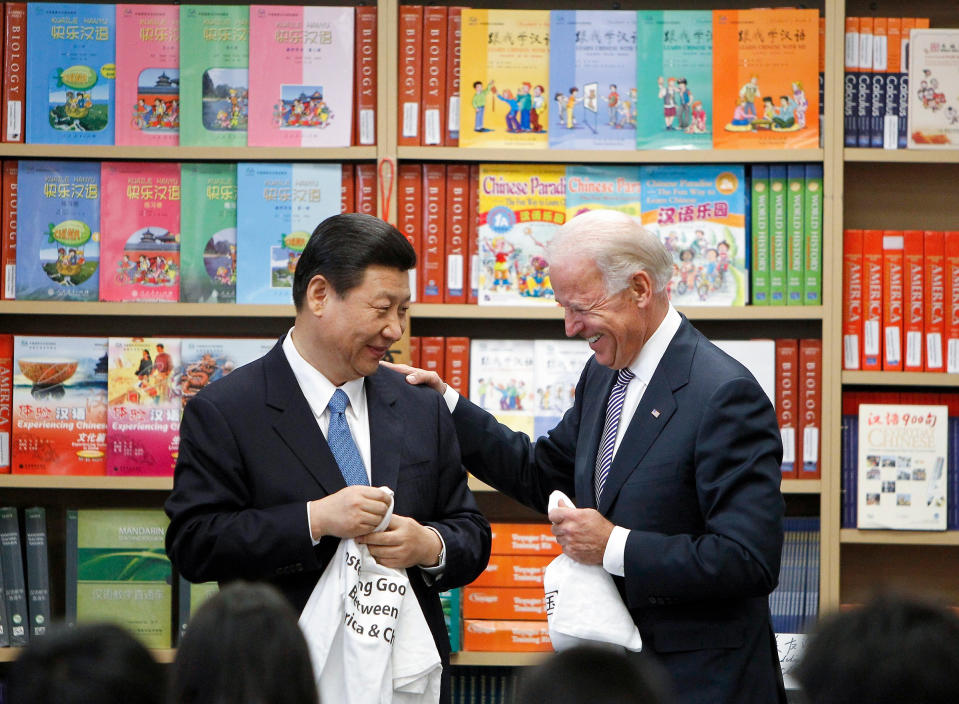
China’s reversion to the politics of Mao-era absolutes has galvanized the idea that the U.S.-led engagement sparked by Richard Nixon and Henry Kissinger in the 1970s has been a failure. That would be reductive. China’s rise from collectivized penury to the world’s top trading nation has hauled hundreds of millions out of poverty while making trillions of dollars for American companies.
But Donald Trump’s winning the Republican nomination for the U.S. presidency in 2016 shifted the tenor of bilateral relations. While many Democrats opposed the trade tariffs and Trump’s racist rhetoric around the COVID-19 pandemic, his mobilization against China is now bipartisan consensus. President Joe Biden has framed both his domestic and foreign agenda as a righteous “battle between democracies and autocracies,” saying Xi “firmly” believes that within a decade China “is going to own America because autocracies can make quick decisions.”
Read More: Trumps, Bidens, and Thomases: It’s Time to Stop Pretending All Political Families Are Off Limits
Today, the chill is marked. Some 82% of Americans have a negative view of China—up from 40% when Xi took power in 2012. Chinese graduate students and visiting scholars in robotics, aviation, and advanced manufacturing are limited to one-year U.S. visas. The Commerce Department has also restricted Chinese students from working on certain emerging technologies. Before, whenever U.S. security agencies sought to limit technology transfer to China, business groups pushed back. Now, weary of regulatory shakedowns, they no longer support engagement.
As each side pushes toward technological self-reliance, they are pressing other nations to join their blocs. It will be a costly decoupling; even before the pandemic, global growth in 2019 was the lowest in a decade. China and the U.S. together account for over 40% of the global economy, but zero-COVID and geopolitical headwinds are forcing governments to invest heavily in bringing production chains home or to a “friendly” country. “All Southeast Asian countries now feel pressure to take sides between the U.S. and China,” says former Thai Prime Minister Abhisit Vejjajiva. “There’s clearly a real risk for all the other countries in the world to feel that we’re now falling back into two camps.”
The diplomatic freeze is most worrying from a security perspective. As well as backing Putin’s war crimes in Europe, Xi has repeatedly called reclaiming control of Taiwan—which politically split from the mainland in 1949 following China’s civil war—a “historic mission,” vowing to “smash” any move toward formal independence for the island of 23 million. “Chinese people will never allow any foreign force to bully, oppress, or subjugate us,” Xi said July 2021 in a speech to mark the CCP’s centenary. “Anyone who dares try to do that will have their heads bashed bloody against a Great Wall of steel forged by over 1.4 billion Chinese people.”
House Speaker Nancy Pelosi’s visit to Taiwan in early August was met with unprecedented military drills, the severing of commercial ties, and an ongoing suspension of communication with Washington. “Around us, a storm is gathering,” Singapore Prime Minister Lee Hsien Loong said in a speech in August. “U.S.-China relations are worsening, with intractable issues, deep suspicions, and limited engagement.” In September, the Senate Foreign Relations Committee approved $4.5 billion in military aid to Taiwan, while Biden for the fourth time said he would defend Taiwan from a Chinese attack.
Read More: The Rising Costs of China’s Zero-COVID Policy
To underestimate Xi is to ignore the ruthless purges that announced his rise. The regime he commands has no off-ramp, opposition, or checks and balances, let alone a leadership transition, in sight. As Cheng Li, a senior fellow specializing in elite Chinese politics at the Brookings Institution, puts it, “Any speculation of a power struggle or challenge to Xi Jinping is completely groundless.”
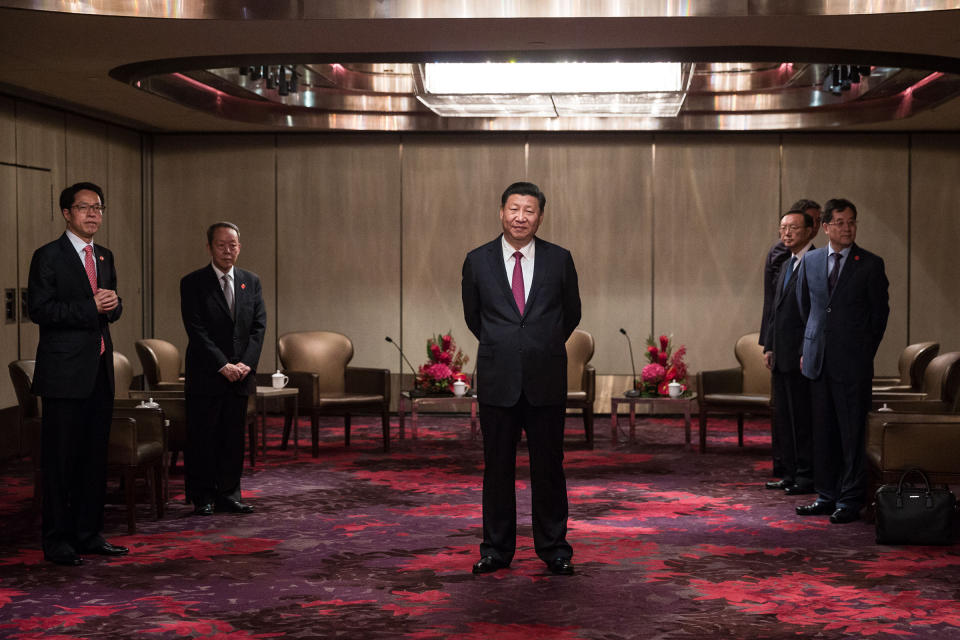
Xi’s rise had an inauspicious start. He was rejected seven times from the Communist Youth League and was only accepted into the CCP upon his 10th application in 1974. His father Xi Zhongxun was a revolutionary comrade in arms of Mao’s who was purged during the Cultural Revolution, a frenzied campaign to eliminate counter-revolutionary elements. After his father fell out with Mao, Xi was “sent down” at age 15 to the Shaanxi province village of Liangjiahe, where he lived in a simple cave dwelling. After a few months, unable to stand the fleas and squalor of rural life, Xi escaped to Beijing only to be arrested and sent back. As punishment, he was removed from his cushy administrative post and sent to a work camp to dig trenches, only returning to the capital after seven years. Today, Liangjiahe is a pilgrimage site in honor of the President, which ambitious cadres must visit to win promotions.
After Xi’s father was rehabilitated by reformer Deng Xiaoping in 1978, he played a prominent role instilling market reforms in China’s south. Xi earned a chemical-engineering degree at Beijing’s Tsinghua University and worked briefly for the military before knuckling down in administrative roles as a junior official in China’s dusty provinces. On April 29, 1985, China’s future President led a five-strong county-level delegation to Muscatine, Iowa, to learn modern farming techniques. Xi was “kind of shy,” Terry Branstad, a U.S. ambassador to China who was governor of Iowa when he met Xi, told TIME in Beijing. Xi continued to underwhelm in his next appointments in southern Fujian province, where he was tasked with attracting foreign investment to help fuel China’s export-powered economic revival. It was here, in 1987, that Xi married his second wife, the famous folk singer Peng Liyuan. In 2002, Xi was promoted to leadership roles in affluent Zhejiang province. When Li Rui, a CCP grandee and secretary to Mao in the 1950s, was asked in 2018 about meeting Xi at that time, he expressed amazement that “his level of education was so low.” In 2007, Xi became party boss of Shanghai following a corruption scandal involving his predecessor. With his ascension to Vice President a year later, Xi looked destined for the top job but had to fend off a late challenge from another princeling rival, Bo Xilai, who had built a populist following as the crime-busting boss of the central city of Chongqing. Party elders were suspicious of Bo, who sidestepped the party apparatus to appeal directly to the people, reviving songs from the Cultural Revolution at fist-pumping rallies.
In September 2012, just as Xi was preparing to assume the presidency, he disappeared from public view for two weeks. Rumors of a coup or assassination attempt swirled. One report suggests that Xi was injured by a chair hurled during a fractious confab of CCP princelings. Most analysts now agree that a standoff arose where Xi gave party elders an ultimatum: back him or find someone else. Fearful of instability, they made their choice. Xi reappeared reinvigorated; Bo—already arrested for corruption—was jailed.
Before Xi rose to power, the common perception was that he was a bland apparatchik with no distinct power base. Meanwhile, his warmth toward the U.S.— he visited Iowa again in 2012 and organized a reunion in Beijing—suggested rosy times for bilateral relations.
But in hindsight, the tumultuous circumstances of Xi’s rise seem to have made it clear to him that divisions posed an existential threat. “China could be different today if . . . Xi had not risen amid scandal and peril,” says Yuen Yuen Ang, a political scientist at the University of Michigan. In his sweeping reforms, Deng had stopped short of an independent legislature and judiciary, believing them a hitch on efficiency. The result was that corruption and cliques metastasized. Xi’s experience with Bo proved in his mind that factions and graft threatened to bring down the party.
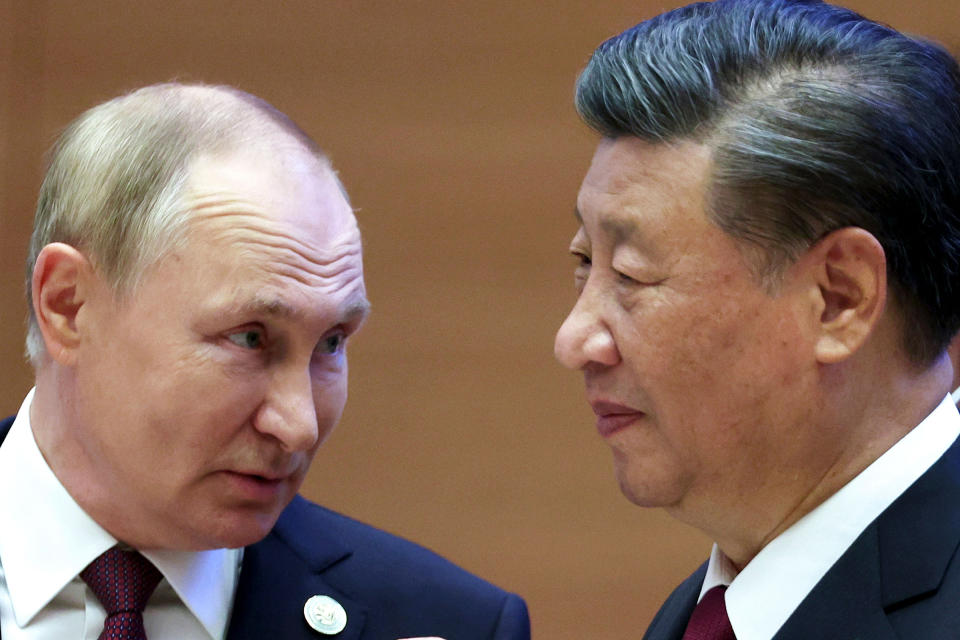
“When Xi came to power, everybody in Beijing tried to assess him, talking to people who worked with him in Fujian and Zhejiang,” says exiled Chinese tycoon Desmond Shum, sipping a martini in a restaurant in Oxford this summer. “The consensus was he’s not a smart person, has no particular talent, and things are going to continue as before.”
Shum learned otherwise the hard way. Seeing Xi’s anticorruption purge take down several close associates, he fled China with his son in 2015, though his ex-wife Whitney Duan was not so lucky. She was reportedly China’s richest woman when she vanished Sept. 5, 2017, from her office in the $2.5 billion glass-and-steel Genesis Beijing building that formed a part of a sprawling property empire. No charges were ever brought against Duan, but a sudden phone call Shum received from his ex-wife from detention last year confirmed that she had been disappeared by the state. Nobody knows for sure why, but some speculate it stemmed from connections with high-level cadres deemed undesirable by Xi. Her fate spotlights the ruthlessness of his purges. “Xi’s personality is particularly interesting and dangerous,” says Shum, author of Red Roulette: An Insider’s Story of Wealth, Power, Corruption, and Vengeance in Today’s China. “He obviously has an ideal state of China in his mind, but he never tells the world.”
Xi is not the first Chinese leader to launch an anticorruption purge. But crucially, his campaign concerned not only bribes and embezzlement but also uniform political thought and personal fealty. “Xi’s anticorruption campaign was a party ratification drive to remove people who are not loyal to the top leader,” says Tsang. It augured a seismic shift in Chinese governance. China had long relied on a robust bureaucracy, and Deng codified the separation of party and state to handle policy and implementation respectively. But under Xi, the two have morphed into one. In 2019, Xi even changed the CCP’s evaluating criteria for leading cadres so that the very first is commitment to his eponymous political thought—gnawing away at the professionalism of governance.
“In the past, everyone took for granted that the Chinese leadership is going to make the adjustments it needs to make to keep its economy humming,” says Susan Shirk, a Deputy Assistant Secretary of State for East Asian and Pacific Affairs under Bill Clinton, and author of Overreach: How China Derailed Its Peaceful Rise. “But now they’re overreaching and harming their own economic development.”
China’s fraying international relations and economic doldrums are creating frictions domestically. Since Deng launched his market-led “reform and opening” of the 1980s, the deal was that the CCP could hold the levers of power in return for improving common people’s livelihoods. GDP per capita rose 40-fold from 1978 to 2012. But GDP fell by 2.6% in the second quarter of 2022, with youth unemployment at an unprecedented 20% in July.
Official overreach is to blame. Instructed in early 2021 to clip the wings of tech firms acting as quasibanks or monopolies, regulators wiped $1.1 trillion off the value of Chinese tech firms by decimating investor confidence in China’s biggest drivers of innovation and growth. Over $1 trillion has poured into Xi’s signature Belt and Road Initiative (BRI)—a sprawling transcontinental infrastructure network—despite the dubious viability of projects. Some $52 billion of Chinese loans related to the BRI had to be renegotiated in 2020 and 2021, according to the New York City–based Rhodium Group. A regulatory crackdown on lending to property developers has meant many are unable to finish existing projects, threatening to pop a real estate bubble that accounts for a quarter of national GDP and an astonishing 70% of household wealth. (Tens of thousands of Chinese are boycotting mortgage payments in response.) Meanwhile, officials tasked with reducing the cost of raising children made after-school classes illegal, obliterating a $120 billion tutoring industry at a stroke.
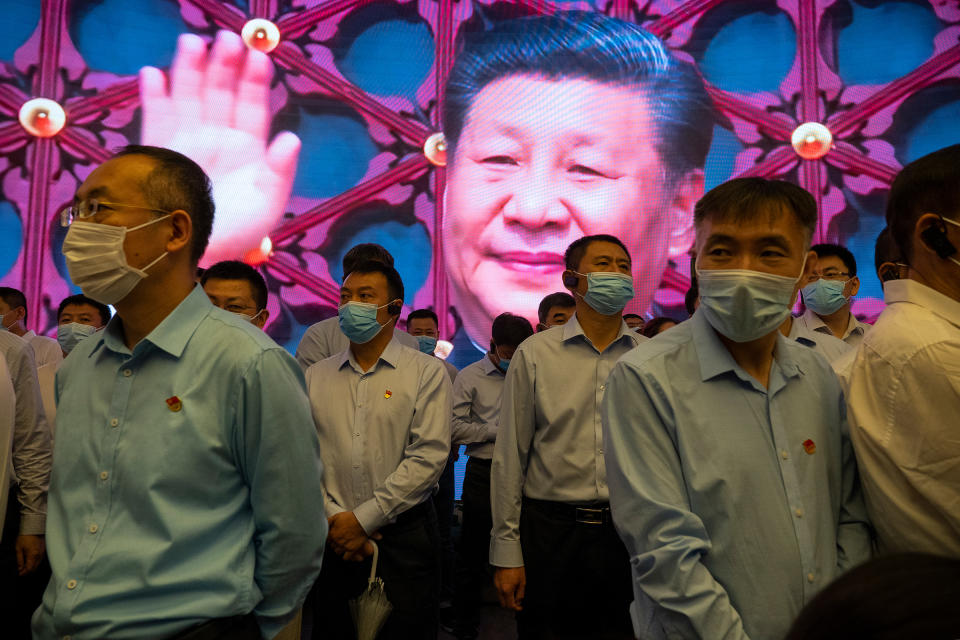
Most egregious is China’s handling of COVID-19. While other countries moved toward an approach of “living with the virus” once vaccinations were widely available, officials caged more than 20 million Shanghai residents inside their homes this spring, some for over five months. At its peak dysfunction, entire apartment blocks were forcefully taken to squalid central quarantine facilities because of a single case in an adjacent building. Mothers were separated from babies, family pets beaten to death in the street, and an unknown number flung themselves to death from rooftops. Not enough focus was put on getting vaccines into arms, compounded by the fact a resurgent nationalism means that only Chinese jabs have been approved, excluding the most effective foreign-made mRNA varieties.
Read More: China’s Property Crisis Threatens to Drag Down Its Steel Industry
In one viral video that surfaced in early April, an elderly Shanghai resident appeared to speak for the entire city during a lengthy evisceration of da bai, or “big whites,” as hazmat-suited public health officials are dubbed. “You need to apply science to what you’re doing; there must be reason,” he said, crouched on the stoop of his apartment complex. “Are you trying to outdo the Cultural Revolution? You’re just creating problems, inventing antagonisms. Look at the atmosphere of terror you’ve all created.” That is what it’s like in China now—fear, frustration, and helplessness seeping into every aspect of daily life.
The question is whether personnel shuffles at the CCP Congress will entrench China’s shift from meritocracy to virtuocracy. While all seven of the current Politburo Standing Committee— the nation’s apex political body—are loyal to Xi, they have the political heft to temper his excesses when necessary. But if three of the most senior members, who are approaching mandatory retirement age, are forced out early and replaced by lickspittles, the implications for Chinese governance could be dire. “Xi Jinping from time to time will surprise people,” says Li of Brookings. “So many people underestimated him 10 years ago. But I do not know whether he will continue to adapt.”
Certainly, there will be few distractions in the Great Hall of the People this year. For one, zero-COVID means that invitations are severely restricted, so pesky journalists and diplomats must watch the proceedings remotely. But even among the party throng, where votes are cast and decisions endorsed, dissent to the emperor will be token. The party will appear united, a hive mind led by Xi. Blue tie or birthday suit, nobody could dare say.
—With reporting by Mariah Espada and Simmone Shah/New York

